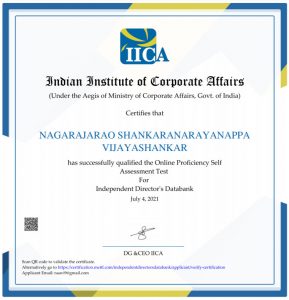Success in E Commerce is a combination of technology, supplier chain, pricing strategy and delivery efficiency.
Amazon undoubtedly is in the forefront of e commerce companies and other competitors are unable to catch up in the breadth of product range and pricing.
Many users see product advertisements on Facebook but often prefer to buy from Amazon the same products which may be available in the manufacturer’s website also.
One of the hidden reasons for which Amazon has succeeded in getting this customer confidence is that the frauds of wrong products being delivered by vendors is reasonably controlled.
Recently, I had an occassion to dispute a supply on Amazon which was not the product ordered. The product supplier was perhaps not prepared to take the return. But Amazon without question refunded the money even though the product was not returned.
No doubt, Amazon might have suffered a small loss in the transaction but the customer confidence they would have gained is worth more than that.
On the other hand I recently ordered a product based on a Face Book advertisement from a site called Apwety and the order was fulfilled by Delhivery. (Product was not available on Amazon). The product delivered was different and when I checked, this was the experience of many others (Details).
What this indicates is that the customer is a noted fraudster and Delhivery was supporting the fraudster by being the delivery agent for the fraudulent company.
In terms of legal liability of a fraud of this kind, the responsibility has to be considered as “Shared”. In a situation where the Delivery partner is a bigger entity and the end fraudster is a relatively unknown company, the possibility of legal liability being claimed from the delivery partner is high. The question that one is the principal and the other is the agent has minimal impact and depends on whether the agent is a disclosed agent or not. Also it is only a matter of investigation if the products were switched by the delivery partner or at the source itself.
Hence when an FIR is filed, it will have to be filed against both the E Commerce operator and the delivery partner with “Joint and several responsibility”.
In the instant case, Apwety and Delhivery are therefore jointly and severally responsible for the fraud. On further enquiry it is found that the details on the MCA website about the company representing Apwety has details of promoters which the registered promoter claims is incorrect since he has sold his company to another person. This means that Delhivery has not done proper KYC on their vendors at the time of their onboarding.
In a parallel case in a Bank scenario, if a customer whose KYC is improper commits a fraud, the Bank has to take the liability. This is the principle established first with the S.UMashankar Vs ICICI Bank case which was personally handled by me and thereafter several cases in which decisions have been given by the Adjudicator of IT and TDSAT. (In Umashankar case the judgement was endorsed further by the High Court).
Hence if a complaint is formally launched against Delhivery and the E Commerce partner together, Delhivery would be liable to fulfill the claim and try to recover it from the vendor.
From my experience with Delhivery, an intelligent guess is that there are perhaps hundreds of fraudulent transactions and scores of fraudulent customers that Delhivery is supporting. If a formal investigation is launched, it would cause a serious damage to the company.
The objective of pointing this out is not to bring disrepute to the Company but to highlight that many companies like this have no understanding of the Risks they run because of the company they keep.
It is in this context that I observed that Delhivery has 8 independent Directors who are expected to be the experts who provide advise to the company on such matters as against three executive directors who may be taking care of Finance, Technology and HR.
This also opens up a thought whether there is any strategy of the entrepreneurs to have 8 non executive independent directors to three executive directors and whether each of the independent directors represent a specific expertise.
Ideally a company should ensure that each of the independent directors take some informal responsibility of managing one area of operations either to assist revenue increase or reduce liabilities which are hidden costs.
In today’s world , there are several legal compliance issues that are hidden liabilities for a company and it requires close monitoring. ITA 2000,DPDPA and AI are three such risks that need close monitoring and it would be a good strategy for organizations to ensure that specific independent directors are assigned oversight responsibilities to assist the Compliance officer, DPO and the AI Governance manager.
Naavi





